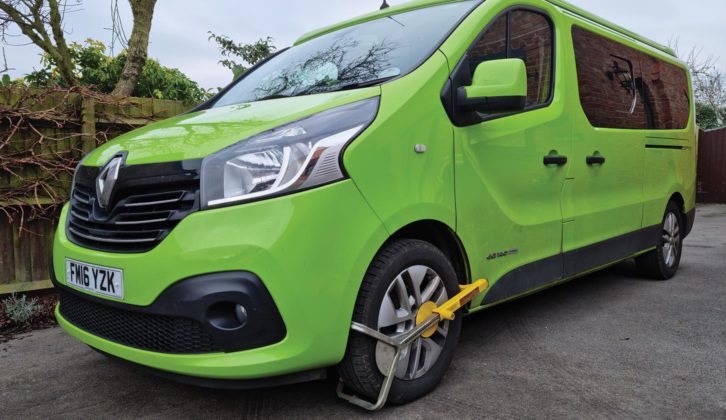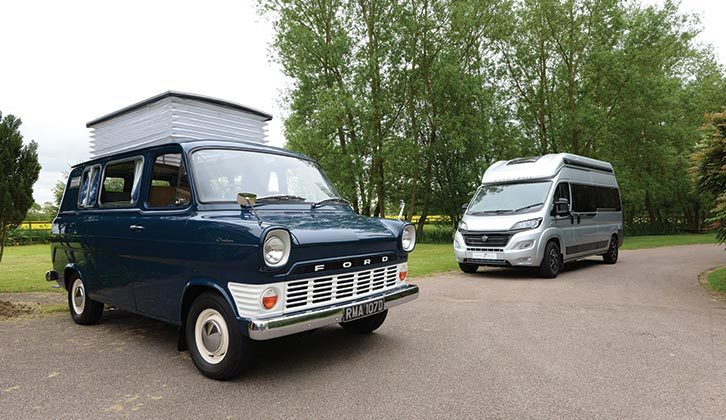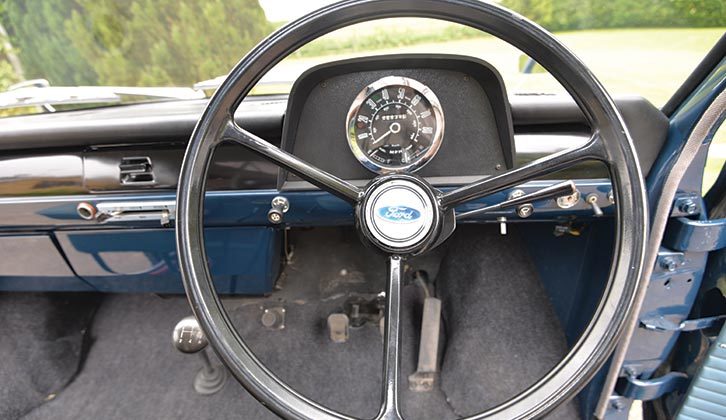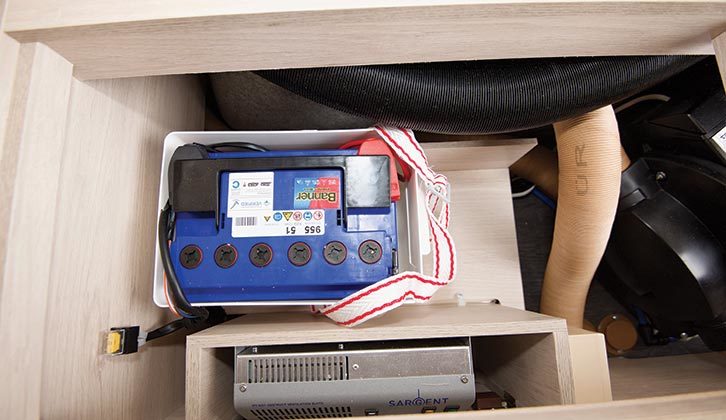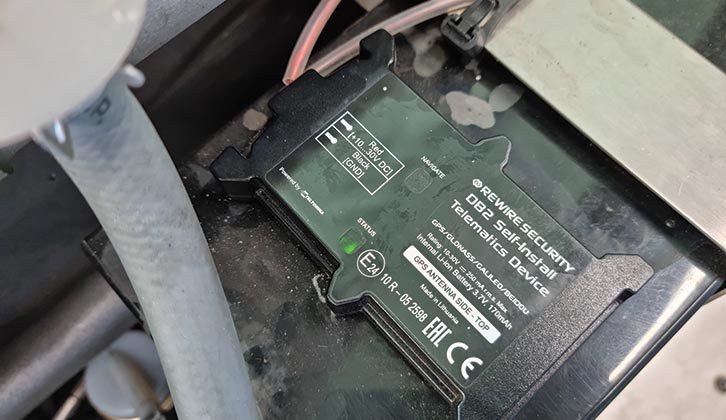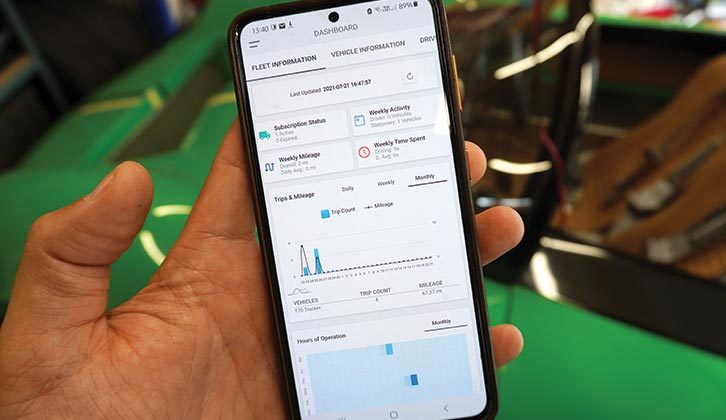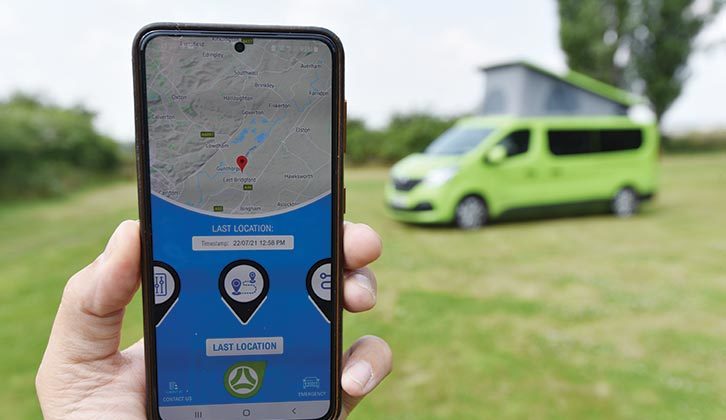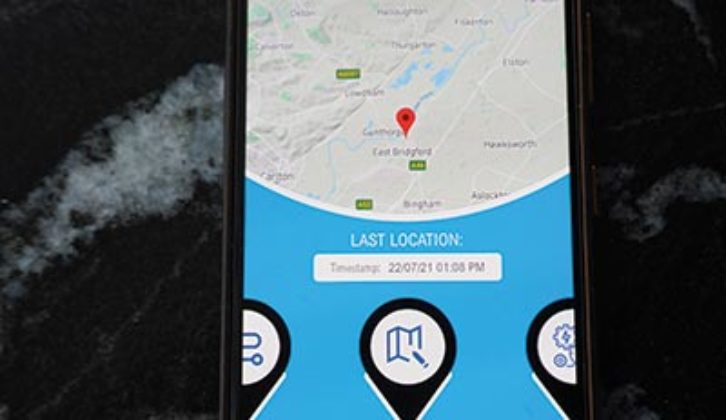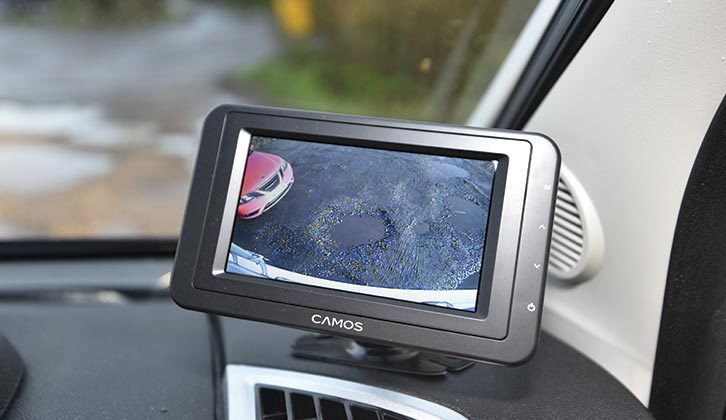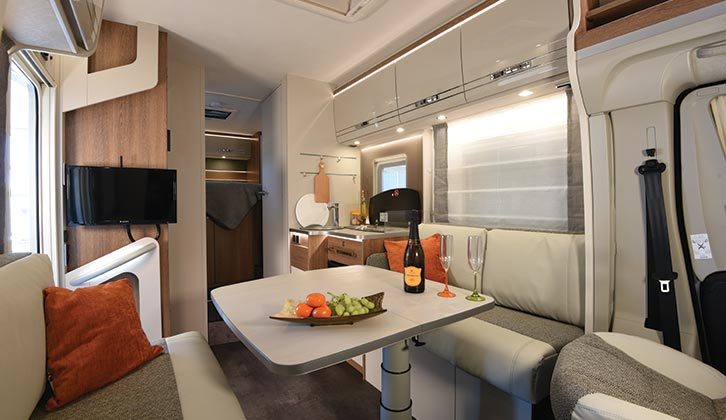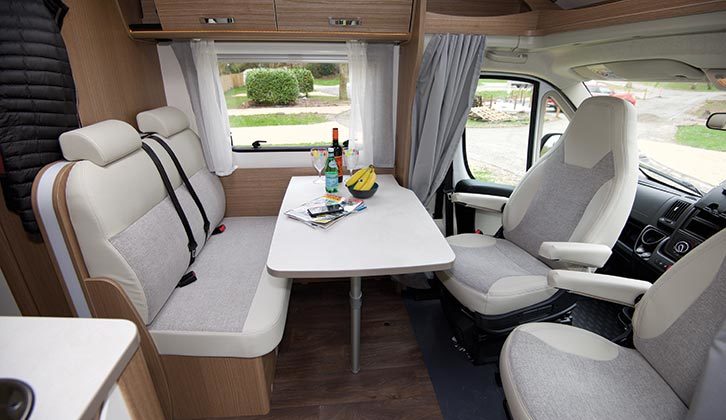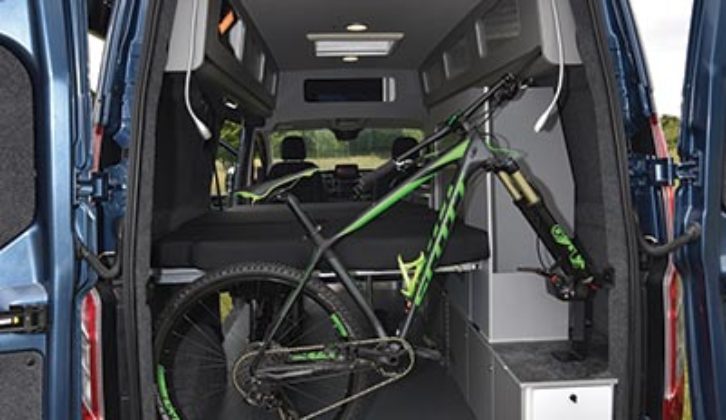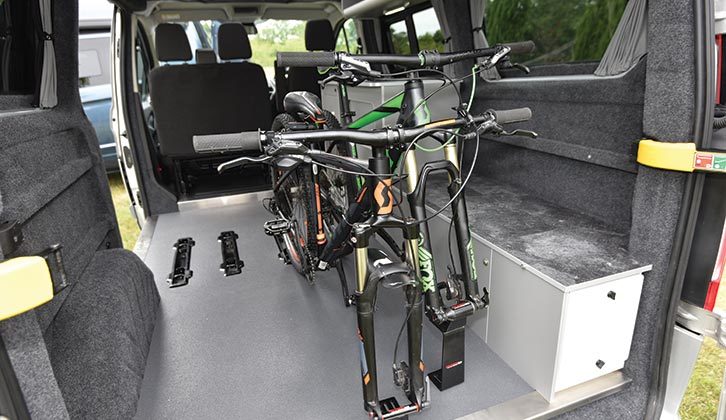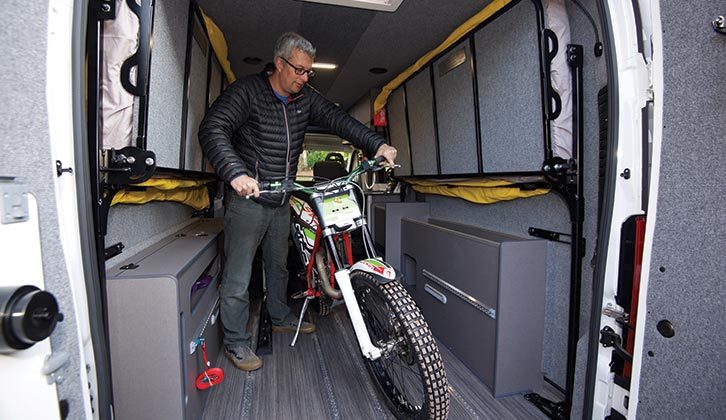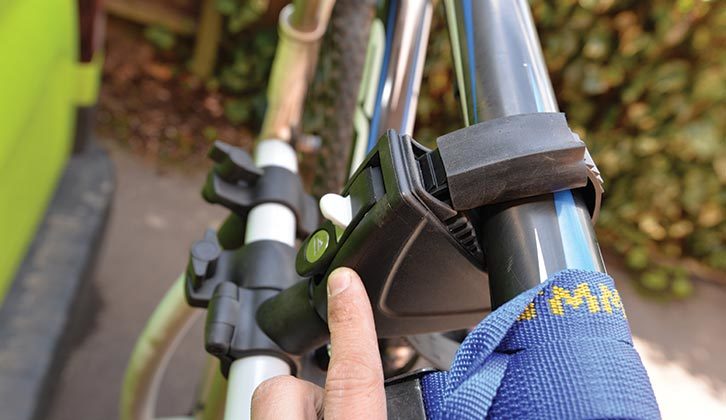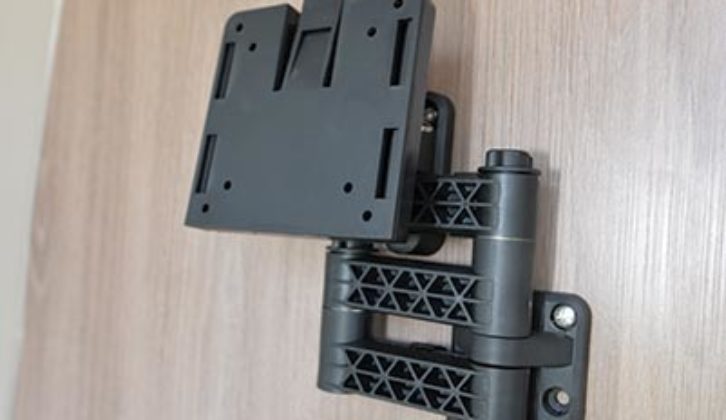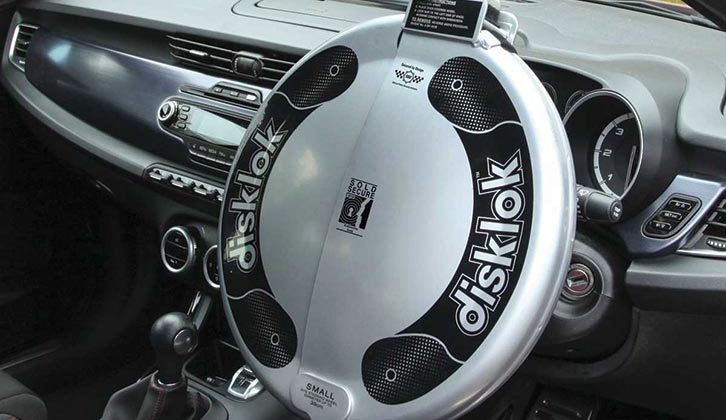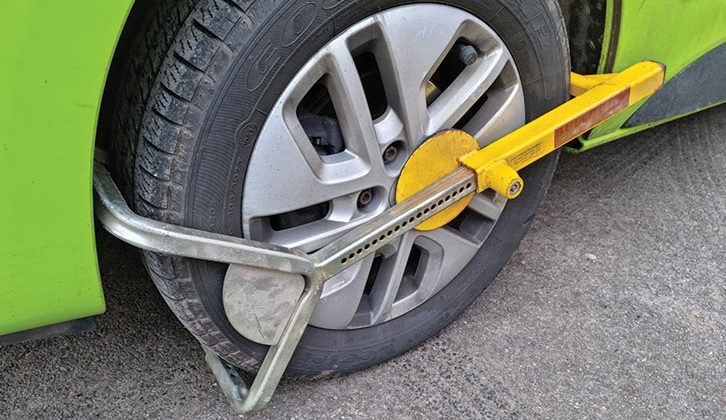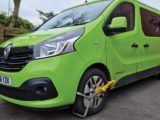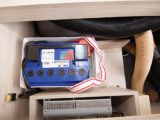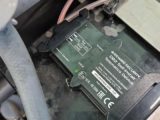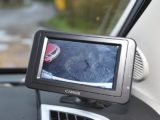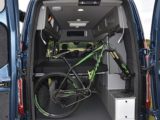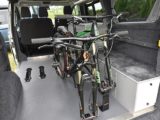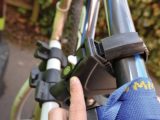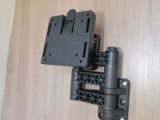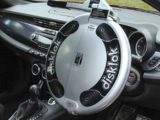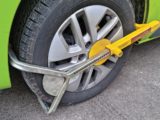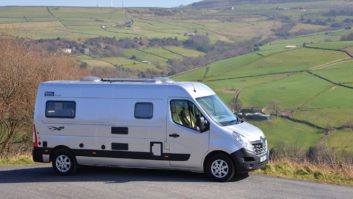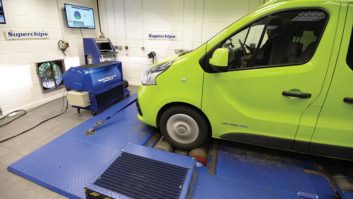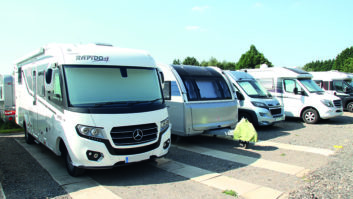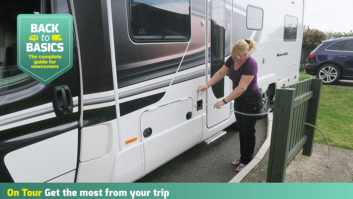Over the past 10 years, vehicle crime as a whole has been steadily reducing, but the pandemic has seen it rising again. Vehicle recovery firm Tracker has reported a 29% increase
in leisure vehicle theft by the end of August 2021. But following some simple motorhome security steps can help to stop your home from home becoming yet another crime statistic.
First, to be clear, there is little to protect you from professional thieves. Some years ago, a Channel 5 documentary, Grand Theft Auto UK, followed one such gang in action – eye-opening clips are still available on YouTube.
What it highlighted was that professional thieves are no fools. Their set-up starts with spotters, who are paid to find a specific vehicle (most are stolen to order). Once found, they follow it home to see if the keys are easy to steal, or pass on the details to the gang. A duplicate key is made, the ’van is taken and trackers and alarms are disabled. Then it’s into a shipping container and onto a boat, or being chopped up for parts.
Only one thing can protect you against these determined criminals, and that’s insurance. Make sure you have excellent cover and follow your provider’s advice to the letter – if they require a tracking device, fit one that they approve.
- Take a look at our best dash cam for a motorhome guide too, where we share our pick of the products to help you stay safe on the road.
Keys and keyless entry
Professional thieves love people who leave their vehicle keys near their front door – it saves them the bother of having to make duplicate keys or breaking in. If your key is visible from a letterbox, cat flap or window, you’re an easy target.
Armed with a telescopic rod or a hooked stick, they can easily obtain your keys. Always hide them from view, preferably in a key safe.
Car-jacking and violent theft involving keys are mercifully rare in the UK, but always be on your guard when returning to your parked vehicle, and lock your doors as soon as you get in.
According to Tracker, some 92% of the vehicles they recovered in 2019 had keyless entry. This is the system most vulnerable to theft; the problem is that keyless entry fobs broadcast a signal that can be grabbed electronically by thieves.
Most manufacturers have now changed how their keyless entry works, but for older systems, the fobs are vulnerable. So what can you do?
One option is a Faraday pouch, designed to stop the signal being broadcast. Some people simply leave their fob in the fridge! Keeping it hidden and far away from your vehicle is essential.
Selling your motorhome
Most people trade their motorhome in to a dealer, but if you sell privately, you need to be aware of a few things. First, never give the potential buyer your key and never let it out of your sight. This obviously prevents buyers getting in the vehicle and driving off, but that isn’t the problem here.
There have been a number of cases – usually involving two thieves – where one ‘buyer’ will keep you talking and distracted while the other ‘buyer’ clones your key. They then make their excuses – “We still have some others to look at” – and return at their leisure to steal your vehicle. Never give buyers your keys or reveal anything about your security systems until you have cash in your hand or cleared funds in your account.
Preventing theft from your motorhome
The most common time for thieves to roam about is between 6pm and 6am, and most prefer to steal vehicles parked in the street. Your motorhome security can be improved by parking near your house and use CCTV if you can.
The worst time of the year for vehicle crime is apparently New Year. While you’re singing ‘Auld Lang Syne’, the thieves are busy! January is the month when most thefts occur – perhaps even thieves get spent up for Christmas?
At any time of year, having things stolen from your motorhome is horrible: they’re breaking into your home. To help prevent this, it’s worth taking stock of how you leave it. Do this before you start spending money on security devices.
You’ll often see motorhomes parked up with phones on the dashboard, laptops in the rear and bags on show. Frankly, this is asking for trouble. Even if you’re just filling up at the petrol station, don’t leave anything obvious on show and lock the ’van while you pay.
Ideally, you want to hide all valuables and make the vehicle look as uninviting as possible. Packing as much kit as you can into lockers is best. If that isn’t feasible, cover your valuables with a blanket or pull down the blinds.
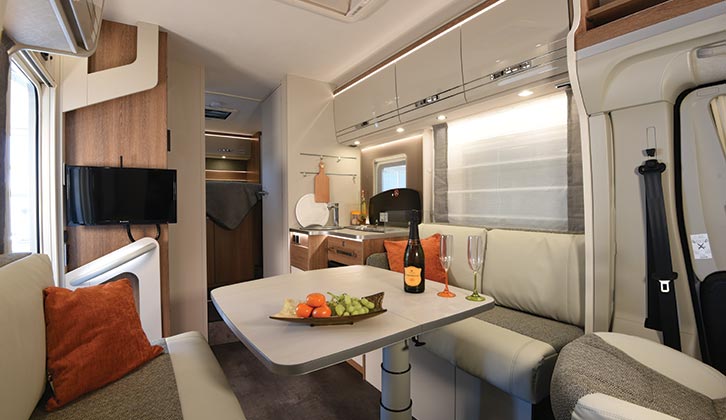
Try to think like the thieves: walk around your vehicle and peer in. If you can see a high-value item from a window, it’s vulnerable. Anything that can be carried and hidden – laptop, phone, wallet, purse, passport, watch, jewellery and so on – should never be left on show.
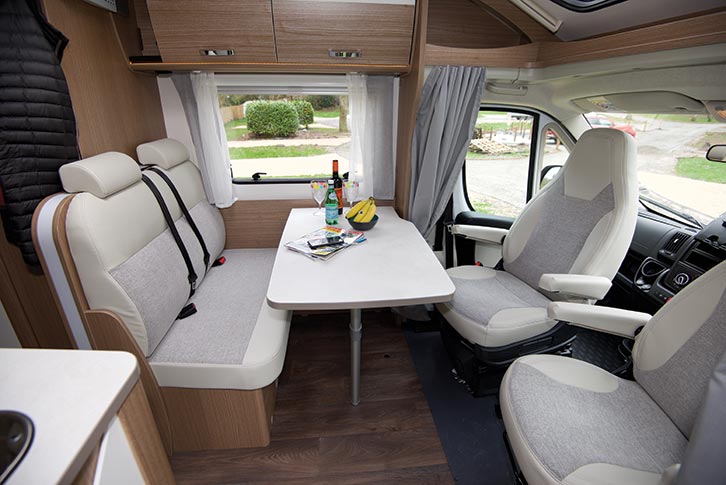
Stopping the opportunists
Although it’s pretty difficult to stop professional thieves, you can deter them, and add devices to halt the opportunists in their tracks.
Generally speaking, coachbuilts are less secure than panel van conversions: they tend to have more habitation windows and non-steel doors. So they benefit most from adding locks to the windows and habitation doors.
Given the choice of a cab or a habitation door, thieves will always choose the latter because they rarely have double locks and are usually fitted to aluminium frames with plastic catches.
Firms such as Milenco sell additional locks for habitation doors; these are easily fitted and help beef up these known weak points.
You can also have extra security locks added to the doors of most campervans, and these are essential. Firms such as Vanguard sell anti-pick reinforced door-locking systems, as well as deadlocks for every door. In addition, you can get reinforced security plates that attach to places on the bodywork that are prone to screwdriver attack.
Thatcham-approved security devices
In the late eighties and early nineties, vehicle crime had reached epidemic levels. Clearly, something had to be done.
Two things happened: manufacturers started to improve motorhome security systems with standard-fit alarms and immobilisers, and Thatcham Research was set up. This is the body that oversees testing of security devices, funded by the insurance industry.
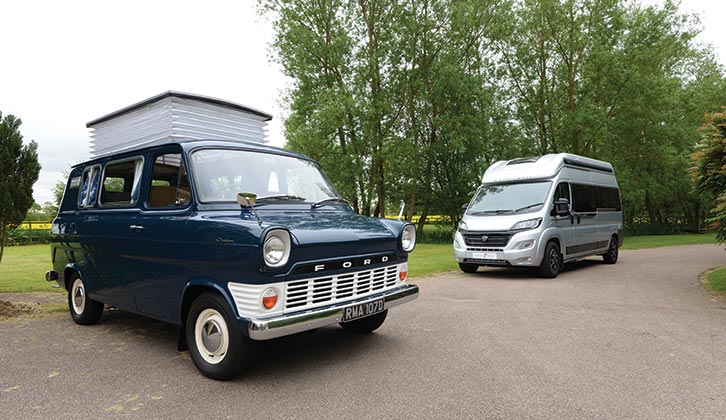
Alarms and trackers are the devices most requested by insurers, but if your vehicle doesn’t already have a Thatcham-approved system, it might not be worth fitting a £500 set-up just to save £50 on your premium. It depends on your insurer – some insist on a certain level of kit being fitted, especially with ’vans over £50,000 in value.
Thatcham-approved security devices are classified into several groups:
- Category 1: Combined alarm and immobiliser
- Category 2: Electronic immobiliser
- Category 2/1: Alarm upgrade (that is, adding an alarm to a Category 2 system)
- Category 3: Mechanical immobilisation (steering wheel, pedal and gear lever devices)
- Category 4: Wheel locking devices
- Category S5: Trackers and recovery systems
- Category S7: Stolen vehicle location
- Q Class systems: Non-categorised systems, including aftermarket alarms, immobilisers and data signalling systems not meeting Thatcham approval
Thatcham Security Certification does mean Thatcham has tested the products, but does not mean your insurer will automatically recognise them and offer you a discount. Device suppliers have to negotiate directly with the insurers, so always check with your provider before you buy any additional motorhome security devices.
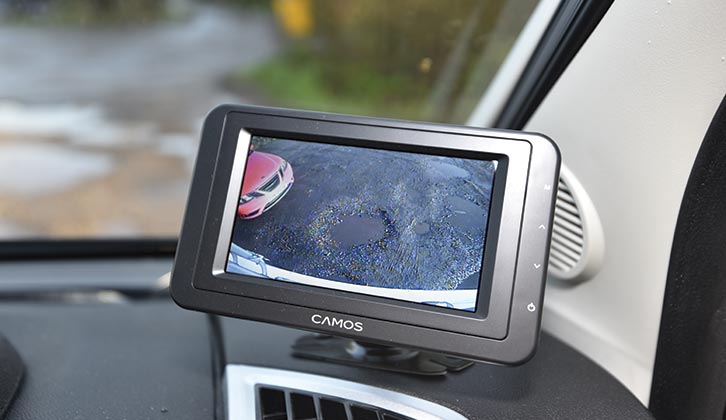
Motorhome alarms and immobilisers
Most ’vans have a factory-fitted immobiliser that is extremely difficult to get around without the code from the key. These are integrated into the ECU and wiring loom, so the days of hot-wiring by cracking the ignition barrel are long gone.
However, professionals can copy keys, so it is worth adding another alarm or immobiliser, often referred to as a ghost, as thieves won’t know it’s there. These can be programmed so they won’t unlock the ignition without a sequence of button presses on the steering wheel, or via a code pad, additional key fob or card.
The downside to an alarm system is, it’s only for your attention. If you’re out of earshot, or not near your phone for an alert, it’s unlikely passers-by will do anything. Nobody would risk contact with criminals to protect somebody else’s property. Alarm manufacturers know this, and many specialise in making their systems as unpleasant as possible for the thief.
If you do want an extra alarm, make sure it is fitted by a motorhome specialist, because they are far more aware of how ’van thieves operate. VanBitz, for example, offers its Thatcham-approved Growler, which features hidden wiring and multiple alarm placements that emit such an ear-piercing racket, no thief could bear to be around them for long. This can also be paired with its app-controlled Non-Starter immobilisation system.
Tracking devices
Trackers use a combination of satellite GPS and the mobile phone network to transmit data. Their key benefit is to alert the owner or control centre of vehicle movement very rapidly, so immediate action can be taken. It’s this speed of response that is the key to fast recovery of the vehicle.
The most basic type is a black box that can be connected to a 12V battery via two leads. Some are made to look like USBs and can be plugged into a 12V socket, while others are disguised as relays or other automotive accessories.
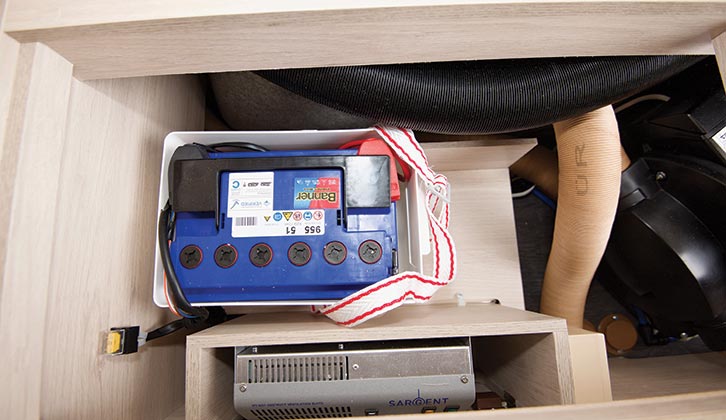
to hide a tracking device, although that would be an easy spot for a pro
More sophisticated systems tend to use small black boxes buried somewhere in your vehicle and hardwired in place – these can be in multiple locations and have several aerials.
Thatcham rates trackers as S5 or S7 models. An S7 tracker must use GPS and is deemed an asset recovery system by insurers. An S5 adds a driver ID tag (Automatic Driver Recognition or ADR) and might also include an immobilisation system, often referred to as S5 plus. S5 and S7 systems monitor your vehicle via a control centre 24 hours a day, 365 days a year.
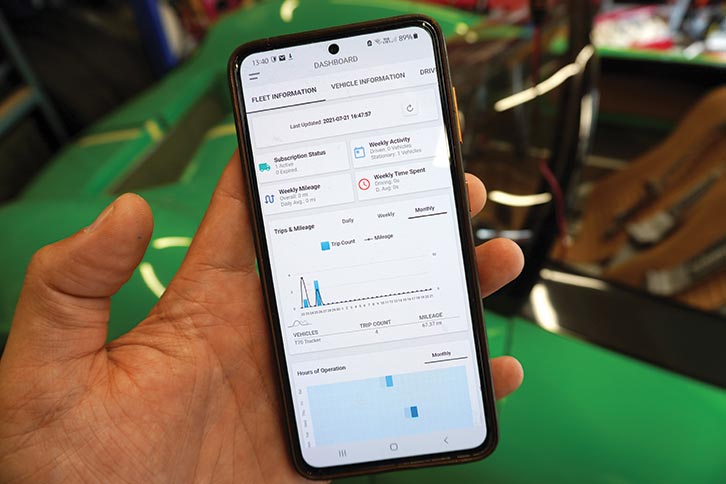
Some manufacturers suggest you’ll get 10-25% discount on your premium by fitting an approved tracker. In practice, if your vehicle is over a certain value – typically £50,000-£60,000 – many insurers will simply not quote unless you have a tracker fitted. Insurance-approved trackers typically cost in excess of £400, with annual subscription fees often topping £150.
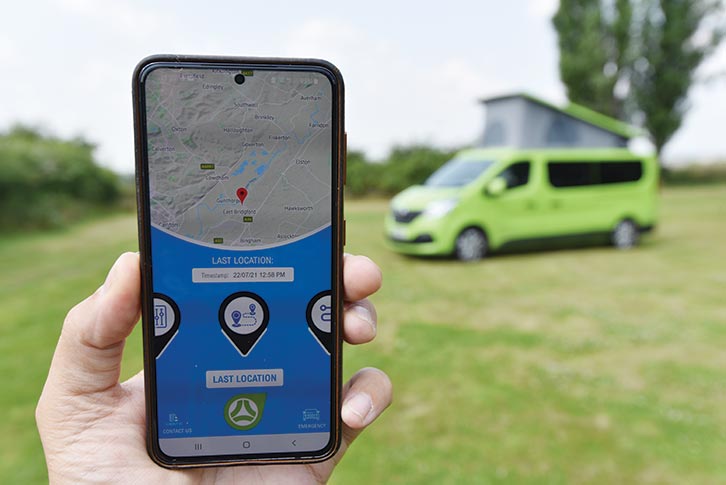
You can buy non-approved trackers for less, but bear in mind that the police might not want to be involved in recovering a ’van with an unapproved tracker if its location system isn’t pinpoint accurate.
However, they can still be useful for remote monitoring – I use a £40 Rewire Security DB2 tracker in my car (with £60 annual subscription), and I find its app better than the Thatcham-approved unit fitted to my campervan.
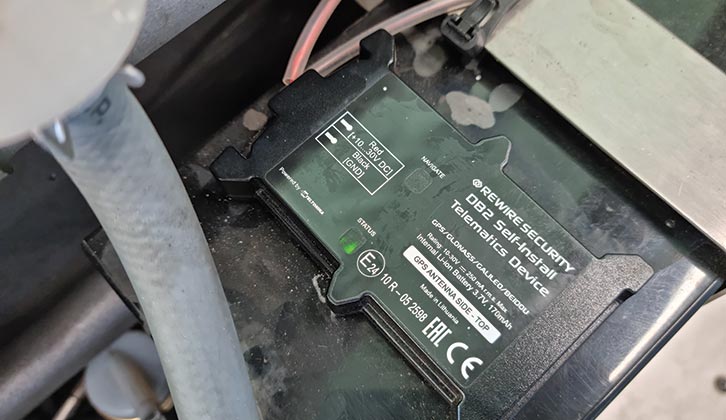
If you store your vehicle remotely, a tracker is a must – it will not only alert you to vehicle movement or the ignition being activated, it will also tell you the battery voltage, so you can take action if the battery is going flat.
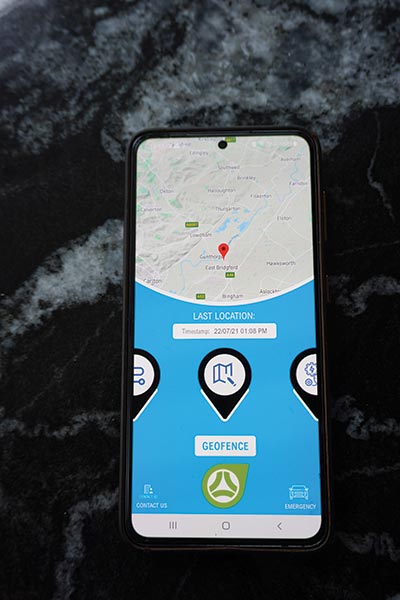
Some thieves will steal a vehicle and park it in a quiet spot with the battery disconnected. The aim is for the battery-powered tracker to go flat and stop sending signals. If you ever see a ’van parked in an odd place, with damage to locks, windows or the steering wheel, report it to the police.
Steering wheel locks
If you have one of those bar-style steering wheel locks with hooked ends, you might want to consider upgrading it. Thieves seem to be able to remove certain examples fairly quickly, and they can assist in breaking the steering lock by providing extra leverage.
Bear in mind that any device that attaches to the rim is only as strong as the rim itself.
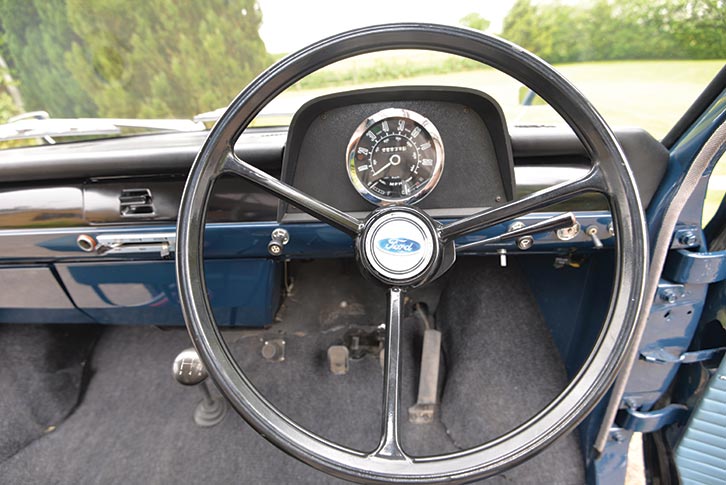
For this reason, the best locks cover the whole steering wheel, making them harder to remove. They also help to prevent airbag theft (another favourite part for thieves).
You should look for a lock that’s tested and approved to Thatcham Category 3. They also have a good deterrent value.
Disklok is one of the most popular brands, together with Autolok.
Motorhome wheel clamps and security posts
Another good visual deterrent is having a wheel clamp. These are available in all shapes and sizes, with the best ones being Sold Secure Gold rated and police recommended – take a look at our best motorhome wheel clamp guide if you’re after one.
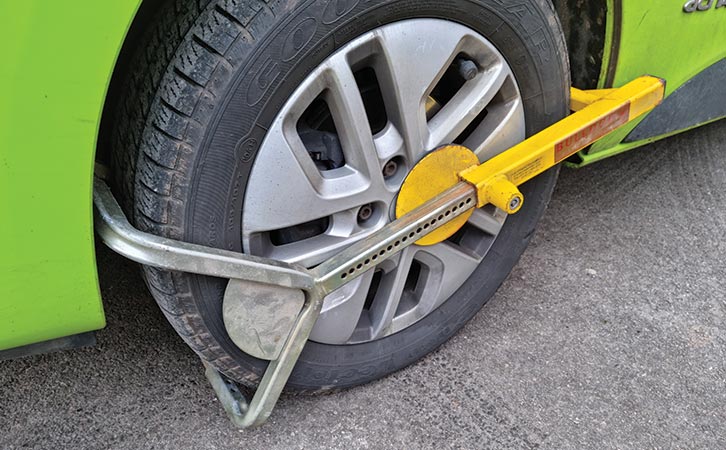
Firms such as Autolok, Bulldog and Milenco offer a good range. As well as Sold Secure Gold rating, look for clamps that are easy to use.
Security posts are worth considering, but their value depends on their location. For example, a post will have little effect in front of a ’van if the rear is only protected by a flimsy fence. Thieves don’t care what they destroy to remove a vehicle.
Equally, security posts need to be professionally fitted securely in the ground – this can involve costly groundworks, and not everyone likes the aesthetic of a luminous yellow metal structure poking out of their carefully designed drive.
Security posts also rely on you remembering to remove them before setting off, and not reversing into them on your driveway!
Pedal locks
An effective method of preventing vehicle theft is to use a pedal lock system. These stop all three pedals (two pedals in an auto) being operated, and being buried in the footwell, are also difficult to remove. In addition, chopping the pedals off makes life hard for the criminal.
Their downside is that they rely on warning labels to act as a deterrent. Again, only buy models approved to Thatcham Category 3.
Devices that have umbrella-style handles to hook around the steering wheel and pedals are likely to be less secure, because cutting the wheel rim could render them useless.
Locking wheel bolts
If your motorhome doesn’t have locking wheel bolts, fit a Thatcham-approved set. Don’t leave the key with the factory toolkit – everyone does that and thieves know it! Some people also add an extra locking wheel bolt, but this isn’t really necessary – they only offer limited protection and locking wheel nut defeat kits are widely available.
Alloys are less of a target these days, largely because most vehicles have them and prices have tumbled. Scrap prices are typically £5-£10 per wheel, so they’re not such a high-value item for the effort involved in removing them. They’re also bulky for thieves to carry and store, so most will target something smaller and easier to sell.
Catalytic converter theft
One item that is a particular target for motorhome thieves is the catalytic converter – these are fitted to both petrol and diesel models. So what can you do to prevent these from being removed?
Several firms offer protection devices, generally consisting of steel rope and clamps bolted around the unit. They help, but can be expensive, reduce payload, and add labour costs to your servicing bills should a section of exhaust or an oxygen sensor need to be renewed.
Another idea is engraving or anti-thief paint on the catalytic converter. This presupposes that scrapyards will refuse to take them, but most of the gangs stealing cats will have links to scrap dealers who really won’t care. And if they do, no engraving or paint can withstand a grinder.
Your best defence is probably to park your ’van off the street, box it in with other vehicles, a wall or a fence, consider using CCTV, set your vehicle alarm, and most crucial of all, check that your insurance covers catalytic converters.
Like alloy wheel theft, catalytic converter theft is closely linked with scrap metal prices. Precious metals are always high value, so cats are much more of a target than alloys.
Convenience versus security
Having your vehicle set up like Fort Knox, with security posts, extra locks, immobiliser fobs and steering wheel and pedal locks, is great for its security, but can make you feel a bit imprisoned.
If you dread the thought of having to unlock or disarm 25 different items of kit before you can simply pop away for a weekend break, it might be time to have a rethink.
The best kit offers a strong visual deterrent, is easy to remove or disarm and doesn’t take up much storage space (or precious payload) when not in use. Pick only Thatcham-approved items for effective defence and insurance approval.
Verdict
The key point about discussing motorhome security is to raise awareness of the problems, not to make you feel worried. You can drive yourself mad trying to prevent every form of crime, and it’s important to realise theft of the whole vehicle is still rare.
Most modern motorhomes come with a good immobiliser already fitted, but for extra peace of mind there’s no harm in adding an additional Thatcham-approved alarm, ghost immobiliser, tracker or mechanical security device.
Pick whichever type will make you feel most secure and you’ll be happiest using – something is better than nothing (although you should avoid non-Thatcham approved steering wheel locks).
A security device will deter professionals and might stop the opportunists attempting anything. Never leave valuables on show in your ’van and, most important of all, make sure that you have the protection of good insurance cover.
- Looking for a new ‘van? Then be sure to take a look at our guide to the best motorhomes, where we pick out the best on the market.
Useful contacts
- Autolok
- Autowatch
- Back2You
- CanTrack
- Disklok
- HAL Locate
- Meta Trak
- Milenco
- Phantom
- Rewire Security
- ScorpionTrack
- SmarTrack
- Tracker
- Trackstar
- VanBitz
- Vodafone
After some more useful tips? Then why not take a look at our guide on how to clean a motorhome.
Future Publishing Limited, the publisher of practicalmotorhome.com, provides the information in this article in good faith and makes no representation as to its completeness or accuracy. Individuals carrying out the instructions do so at their own risk and must exercise their independent judgement in determining the appropriateness of the advice to their circumstances. Individuals should take appropriate safety precautions and be aware of the risk of electrocution when dealing with electrical products. To the fullest extent permitted by law, neither Future nor its employees or agents shall have any liability in connection with the use of this information. You should check that any van warranty will not be affected before proceeding with DIY projects.
If you’ve enjoyed reading this article, why not get the latest news, reviews and features delivered direct to your door or inbox every month. Take advantage of our brilliant Practical Motorhome magazine SUBSCRIBERS’ OFFER and SIGN UP TO OUR NEWSLETTER for regular weekly updates on all things caravan related.
